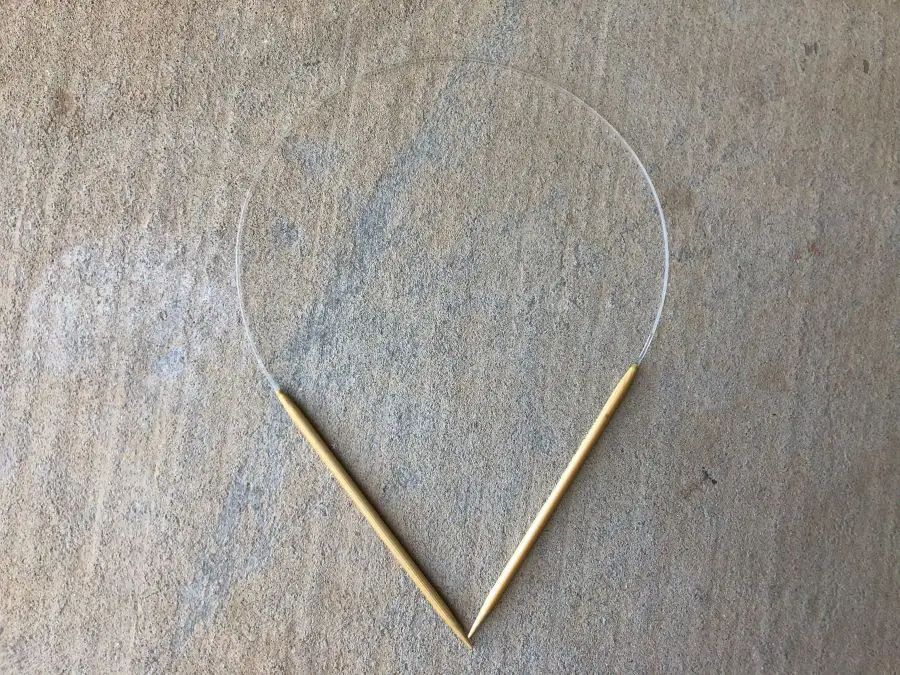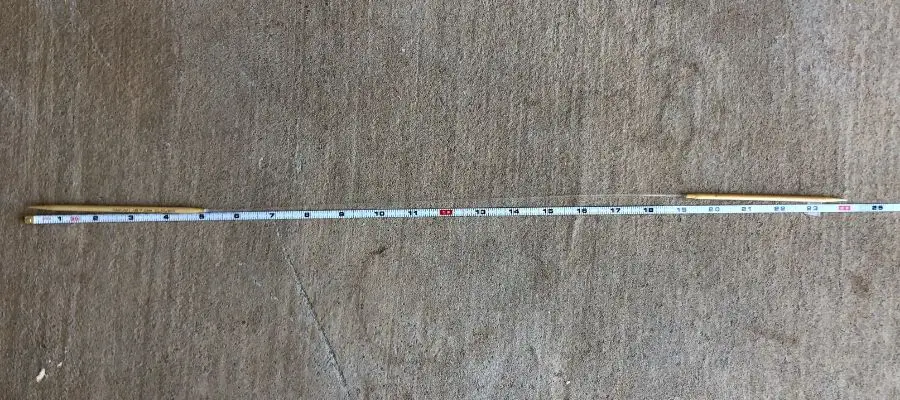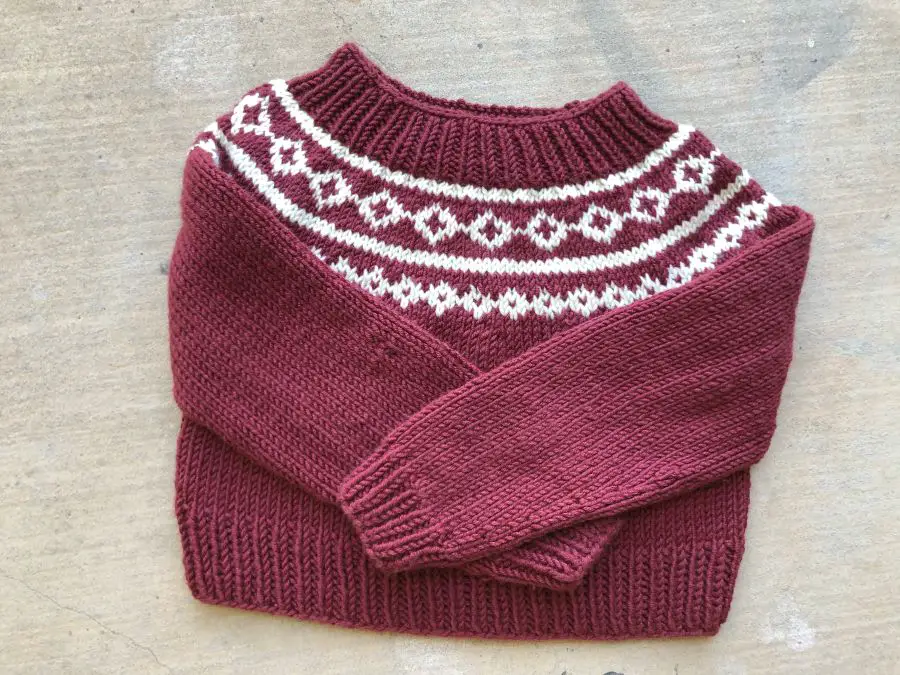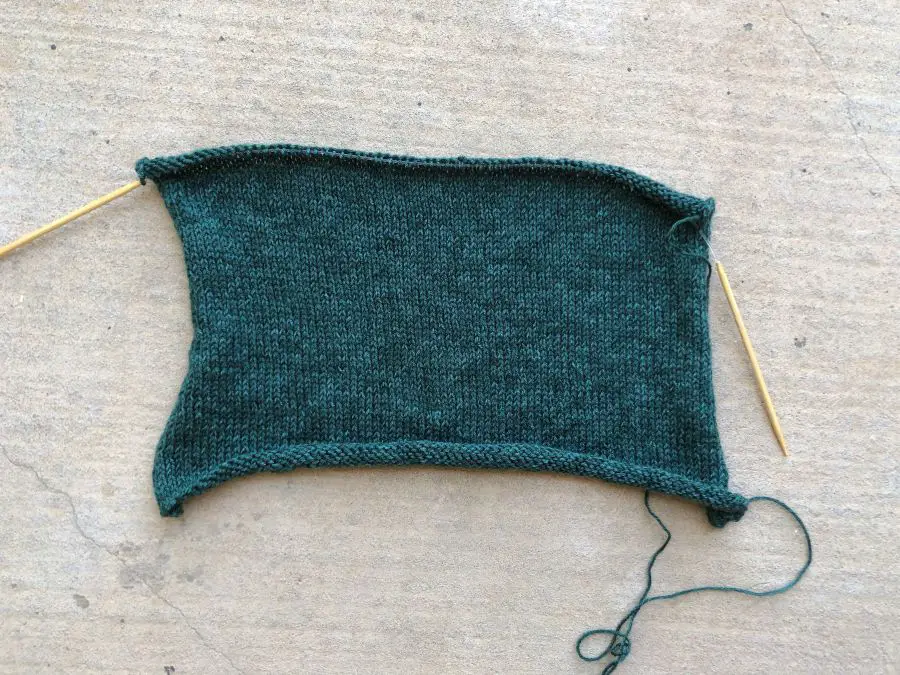Circular knitting needles made learning to knit a smooth process for me. But as a beginner, choosing the correct size circular needles was a struggle. I stood in the craft store aisle researching knitting needle sizes so I wouldn’t buy the wrong ones. If there is such a thing.
So how do you choose circular knitting needles? The length of circular knitting needles is determined by the size of the project. If a project is being worked in the round, the length needs to be the same size as the project circumference or smaller. If the project is being worked flat, the needles need to be long enough to fit the width of the project.
Patterns will have the needle size and cord lengths given to you. However, there will come a time when you wonder if the circular you have on hand will work. Or you may get adventurous and want to experiment with your own pattern. This will guide you to successfully choosing the right sized pair of circular knitting needles.
Project Guidelines for Using Circular Knitting Needles
I have compiled a list of projects based on the size of circular needles that are commonly used. Don’t limit yourself to these, they are merely just guidelines.
| Circular Needle Length | Project | Notes |
| 9″ | Socks, baby hats, sleeves | For narrow projects. Must use DPNs for anything smaller. |
| 8″ – 12″ | Baby hats, socks, mittens, sleeves | Not commonly used. |
| 16″ | Adult and child hats, baby sweaters, sleeves, collars, cowls | Typically for small projects knit in the round |
| 24″ | Body of adult and child sweaters | Probably most versatile for knitting in the round or flat |
| 29″ | Cardigans, baby blankets, shawls | Can be used for knitting in the round or flat |
| 36″ | Blankets, adult cardigans, shawls | Generally for flat knitting that will not fit comfortably on straight needles |
| 40″ and above | Shawls, bed sized blankets | Normally knit flat |
Knitting Needle Cord Length
If you are not familiar with circular knitting needles, I’d like to point out that they are not actually a circle. The term “circular” comes from the way projects can be knitted in a circle. Circular knitting needles have two needle heads that are connected by a plastic cable. Essentially, it is a large, flexible double pointed needle. Take a look at the photo below for an idea of what one can look like.

Circular knitting needles come in a variety of lengths. The shortest set of circulars you will find is 9 inches. And the biggest length can exceed 40 inches. Popular cord lengths in between include 12 inches, 16 inches, 24 inches, 29 inches, and 36 inches.
Most knitting needles have the size printed on them. However, the length is not printed on the needles. The package always has lengths labeled, but let’s be honest, those get trashed. Take a look at the photo below to see how you can determine the length of your circular needles without the package or any labels.
The easiest way to determine the length of circular knitting needles is to lay the needles out flat and measure from tip to tip with a measuring tape. The length includes the two needle points and the connecting cord.

Construction of Project Using Circular Knitting Needles
There are two common methods of knitting with circular needles: knitting in the round and knitting flat. Each has a different implication on cord length. Let’s take a look at both.
Knitting in the Round

This is the whole reason circular needles exist! Projects knit in the round are knitted on a set of circulars and stitches are joined to create a seamless tube. The stitches are knit in a spiral until the desired length; there is no back and forth stitching.
Since items are knit in rounds, the biggest circumference of the project cannot be smaller than the length of the needles. If the circumference is smaller, the stitches must stretch really far along the needles so they can be joined together.
For instance, say you want to make a sweater with a bust measuring 32 inches. A set of 36 inch circular needles will not be sufficient. The yarn won’t stretch across the extra four inches enough for you to join them. So a set of 29 inch or even 24 inch circulars would be best for knitting the 32 inch bust.
As in my example, there are always projects that are either smaller or bigger than the length of the needles. When selecting a set of circular needles for knitting in the round, choose a length that is either the same size as your project or smaller.
Knitting Flat with Circulars

Circular knitting needles can also be used in place of straight needles. This is useful for all types of projects! Pieces are knit flat for small or large projects. They also come in handy for projects that require any sort of shaping, such as a collar.
The length of the circular knitting needle does not matter as much when knitting flat compared to knitting in the round. Circular knitting needles can hold stitches approximately three times the length of the cord. This leaves room for you to play with.
Having circular needles longer than the suggested length is not an issue. Of course, use your own discretion. You wouldn’t want to knit a sleeve or pair of socks on a 40 inch circular, but theoretically it could be done.
And having circulars smaller than suggested shouldn’t be a major issue. There is such a thing as having too many stitches on the needles, for fear of dropping stitches, but again, use your judgment. You can cram a lot of stitches on the needles, but it comes down to your personal preference.
Simple Calculations to Determine Circular Needle Length
If you want to be a little more exact, there are a couple of calculations that can tell you the minimum and maximum length of circulars you should use for your project. The only numbers you need from the pattern are the gauge and the minimum and maximum number of stitches.
The first calculation requires the gauge, which is given as stitches per a certain number of inches/cm. For example, a gauge of 20 stitches per 4 inches.
Divide the number of stitches of your gauge by the number of inches/cm given in the gauge. This will give you the number of stitches per inch/cm.
In the previous example the calculation would be 20 stitches / 4 inches = 5 stitches per inch. Use that number for the following calculations.
Minimum Length of Circular Knitting Needles for Projects
For the minimum length, you need to locate the number of stitches you will have on your needles. Once you have that, divide the total stitch count by the number of stitches per inch. Then, since the cord can hold about three times its length in stitches, you will divide the number previously calculated by three.
Before I lose you, let’s do this together. Say your total number of stitches is 250. Take 250 stitches and divide by 5 stitches per inch (calculated from gauge). This equals 50 inches. Now divide 50 inches by 3 and get 16.67 inches.
There is one last step. You must add the lengths of the needles back to that number, since you only accounted for the cord length by dividing by three. The needles are about 4 or 5 inches, so on the safe side, we would add 10 inches. So now our length is 26.67 inches.
In our example, we would want to round up to a 29 inch circular needle at the very least since 26.67 represents the minimum length we would want.
Maximum Length of Circular Knitting Needles for Projects
For the maximum length, locate the number of stitches you will be knitting. Scan through the pattern for the maximum number of stitches that will be on your needle at one time. Then divide that number by the stitches per inch you calculated earlier. Now you have the length of your project, which determines the size of your circular knitting needles.
Say the number of stitches is 150 for your project. Now calculate 150 stitches / 5 stitches per inch. This equals 30 inches. So you would want to use 29 inch circulars for this particular project. But nothing higher than that if knitting in the round.
I got these calculations from Donna Jones, a handknit designer and tech editor who lives in South Wales. I find them very helpful. She also created a nifty table that tells you exactly how many stitches fit on circular needles, which makes it easy to determine the length of needles you need for any project. You can find the chart here if you scroll to the bottom of the page.
Interchangeable Circular Knitting Needles
This section is just to inform you that sets of interchangeable circular knitting needles exist. Most sets come with 10 – 12 different sized needle tips, along with about 4 different length cables. You can easily change out the size tips by screwing them onto the cord.
These sets are pricey, but they can be convenient to have any size needle. However, they are not necessary. If you are interested in purchasing a set, Joann sells the Clover brand of bamboo needles for a reasonable price and you can find them on their website here.
And this is a secret, but I recommend getting them here because when the 60% coupon is available, it applies to these bad boys! So you can get them at a fraction of the cost! Shh..
Other Techniques
The Magic Loop Method is a way for knitters to use a longer set of knitting needles to knit small circumferences. For example, using a 36 inch needle to knit a 15 inch sleeve.
Conclusion
I just wanted to point out that one set of knitting needles can go a long way. Having a set of needles in every size and length would be optimal. However, when just starting out, there is no point. So many projects can be cast onto the same size circular needles.
